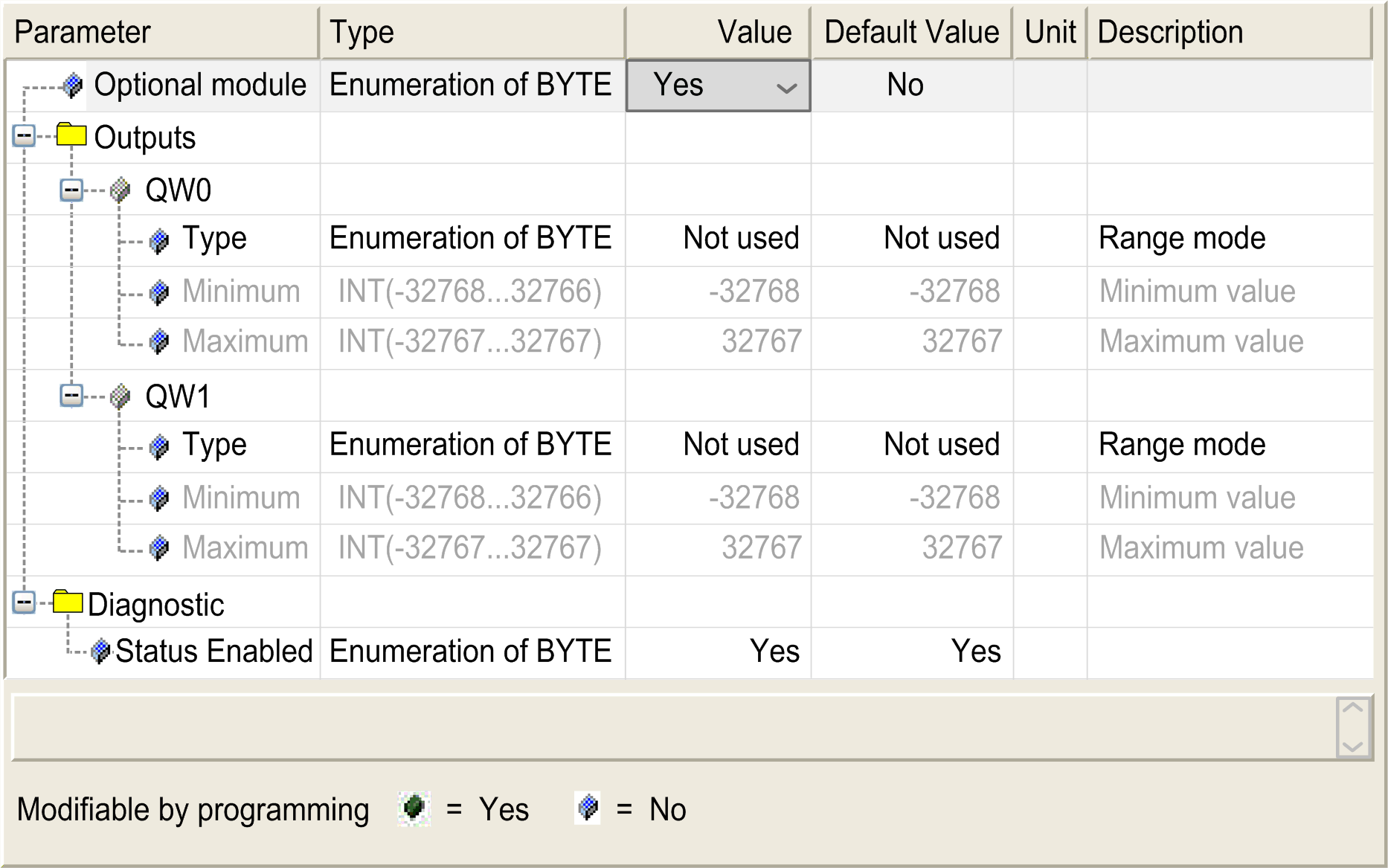Optional I/O Expansion Modules
Presentation
I/O expansion modules can be marked as optional in the configuration. The feature provides a more flexible configuration by the acceptance of the definition of modules that are not physically attached to the controller. Therefore, a single application can support multiple physical configurations of I/O expansion modules, allowing a greater degree of scalability without the necessity of maintaining multiple application files for the same application.
Without the feature, when the controller starts up the I/O expansion bus (following a power cycle, application download or initialization command), it compares the configuration defined in the application with the physical I/O modules attached to the I/O bus. Among other diagnostics made, if the controller determines that there are I/O modules defined in the configuration that are not physically present on the I/O bus, an error is detected and the I/O bus does not start.
With the feature, the controller ignores the absent I/O expansion modules that you have marked as optional, which then allows the controller to start the I/O expansion bus.
The controller starts the I/O expansion bus at configuration time (following a power cycle, application download, or initialization command) even if optional expansion modules are not physically connected to the controller.
The following module types can be marked as optional:
-
TM3 I/O expansion modules
-
TM2 I/O expansion modules
You must be fully aware of the implications and impacts of marking I/O modules as optional in your application, both when those modules are physically absent and present when running your machine or process. Be sure to include this feature in your risk analysis.
| WARNING | |
|---|---|
Marking an I/O Expansion Module as Optional
To add an expansion module and mark it as optional in the configuration:
|
Step |
Action |
|---|---|
|
1 |
Add the expansion module to your controller . |
|
2 |
In the , double-click the expansion module. |
|
3 |
Select the tab. |
|
4 |
In the line, select in the column: 
|
Shared Internal ID Codes
Controllers and bus couplers identify expansion modules by a simple internal ID code. This ID code is not specific to each reference, but identifies the logical structure of the expansion module. Therefore, different references can share the same ID code.
You cannot have two modules with the same internal ID code declared as optional without at least one mandatory module placed between them.
This table groups the module references sharing the same internal ID code:
|
Modules sharing the same internal ID code |
|---|
|
TM2DDI16DT, TM2DDI16DK |
|
TM2DRA16RT, TM2DDO16UK, TM2DDO16TK |
|
TM2DDI8DT, TM2DAI8DT |
|
TM2DRA8RT, TM2DDO8UT, TM2DDO8TT |
|
TM2DDO32TK, TM2DDO32UK |
|
TM3DI16K, TM3DI16, TM3DI16G |
|
TM3DQ16R, TM3DQ16RG, TM3DQ16T, TM3DQ16TG, TM3DQ16TK, TM3DQ16U, TM3DQ16UG, TM3DQ16UK |
|
TM3DQ32TK, TM3DQ32UK |
|
TM3DI8, TM3DI8G, TM3DI8A |
|
TM3DQ8R, TM3DQ8RG, TM3DQ8T, TM3DQ8TG, TM3DQ8U, TM3DQ8UG |
|
TM3DM8R, TM3DM8RG |
|
TM3DM24R, TM3DM24RG |
|
TM3SAK6R, TM3SAK6RG |
|
TM3SAF5R, TM3SAF5RG |
|
TM3SAC5R, TM3SAC5RG |
|
TM3SAFL5R, TM3SAFL5RG |
|
TM3AI2H, TM3AI2HG |
|
TM3AI4, TM3AI4G |
|
TM3AI8, TM3AI8G |
|
TM3AQ2, TM3AQ2G |
|
TM3AQ4, TM3AQ4G |
|
TM3AM6, TM3AM6G |
|
TM3TM3, TM3TM3G |
|
TM3TI4, TM3TI4G |
|
TM3TI4D, TM3TI4DG |
|
TM3TI8T, TM3TI8TG |
|
TM3XFHSC202, TM3XFHSC202G |
|
TM3XHSC202, TM3XHSC202G |